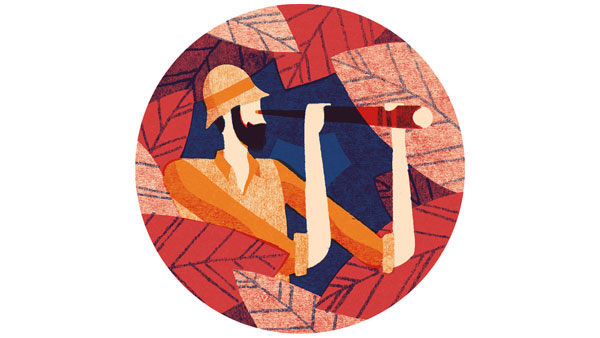There’s more to the Dharma than finding relief from suffering
Conventional wisdom tells us that people are drawn to Buddhism by suffering, and that the chief motivation for practice is to achieve the end of suffering. This is an axiom that fits in well with the modern medicalization of Buddhism, where mindfulness-based interventions offer relief from a wide array of physical and mental ailments, and it also happens to conform with Judeo-Christian notions of redemption and salvation. But how well does this understanding reflect the situation in ancient India at the time of its origins?
There are some dramatic stories of people coming to Buddhism from intense suffering, especially among women such as Kisagotami, who lost her son, and Patacara, who lost her entire family. Both went mad with grief, were restored to their right mind by encountering the teachings of the Buddha, and went on to become awakened. But these stories are relatively rare. Much more often the stories tell about people of privilege and high standing, like the Buddha himself, who went forth into the homeless life to seek truth, to enter upon a noble search for meaning, and to accomplish the highest attainable goal.
The large community of wandering ascetics among whom the Buddha lived were seekers of knowledge, not refugees from despair. Many had “dropped out” from the brahmin caste, like Sariputta, or were young men from the families of aristocrats or wealthy merchants who eagerly embraced the hardships of the forest life as a challenge. They “turned on” to meditation and altered states of consciousness, not to seek relief from pain but to open up to new experiences and expand the capabilities of their minds. What they “tuned in” to was a deeper understanding of reality, not as something to be escaped but as something to be embraced with full awareness.
Mindfulness and meditation, in comfortable settings, offer many consolations to an aging population, and indeed the modern Buddhist movement is predominantly inhabited by those with gray or graying hair. Encountering the existential truths of aging, illness, and death with insight and understanding is an inherently valuable and rewarding activity. But I wonder if those in the prime of their youth might find in these teachings the kind of enthusiasm and inspiration that seems to have spread like fire through the Buddha’s own generation. Taking on the project of awakening the mind was a call to adventure, a challenge to “do what is hard to do,” to break through the complacency of a comfortable life, to test oneself and see how far a person might evolve in understanding. The life of the wandering ascetic or the spiritual seeker, in all cultures and times, is situated at the cutting edge of the human endeavor. It is driven by the courage to dare and to risk, requires the sacrifice of comfort and control, and is pursued with a commitment not short of life and death.
As the modern Buddhist renaissance moves from an early to a more mature phase, I wonder if we are due for some optimism, some enthusiasm, and some determination to take it to the next level. Perhaps it is time for people to demonstrate through their own realization the transformative value of these ideas and practices.
Buddhism is famous for its ability to change and adapt to new cultures as it has moved around the world and progressed through the centuries. An equally important question, however, is, how much has it changed the people it has encountered? We have been pretty successful at adapting the teachings of Buddhism to fit into our culture, through secularization, the re-languaging of stress reduction, and the invention of such fields as contemplative science, to give just a few examples. But how much have we allowed ourselves to be changed by our encounter with Buddhist thought and practice?
The Buddha measured the success of his teaching by how deeply people were transformed by it. He insisted that his followers engage with the teachings, both intellectually and experientially, and indicated precisely how they would be altered by doing so. The toxic emotional states of greed, hatred, and delusion would be first diminished and eventually abandoned altogether. The beneficial states of generosity, kindness, and wisdom would strengthen and grow, and together would eventually become the default mode of the mind. How well are we actually managing to transform ourselves along these lines? I would say only that it is not okay that some of our most ostensibly attained masters have misbehaved so badly, or that people can practice for a lifetime and still be as insecure and confused as ever, or that there remain such high levels of misinformation and entrepreneurial distortion in the popular presentation of the tradition.
It’s time to adapt the dharma less to our taste, and adapt ourselves more to the dharma. Let’s hope the next wave of Buddhists actually embody what a more evolved human being looks like, not to escape pain, but because it is a most noble thing to do.



Add new comment